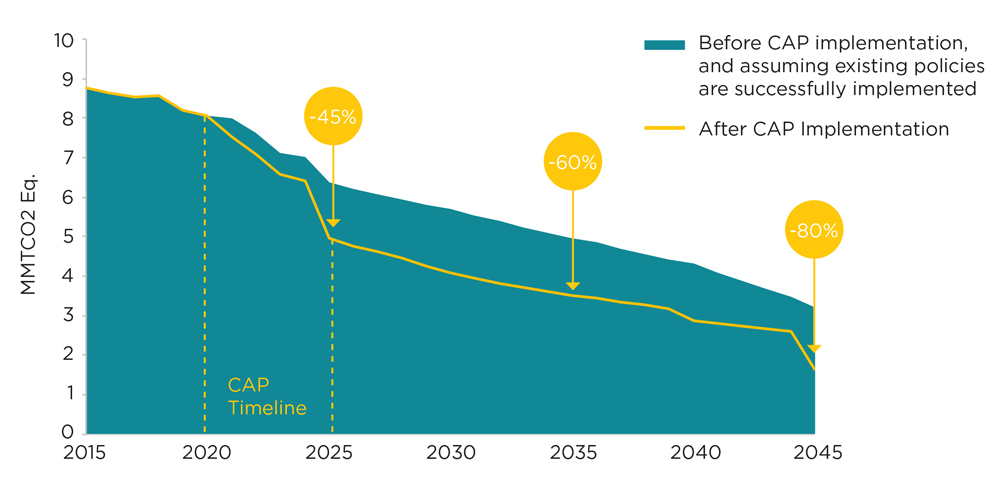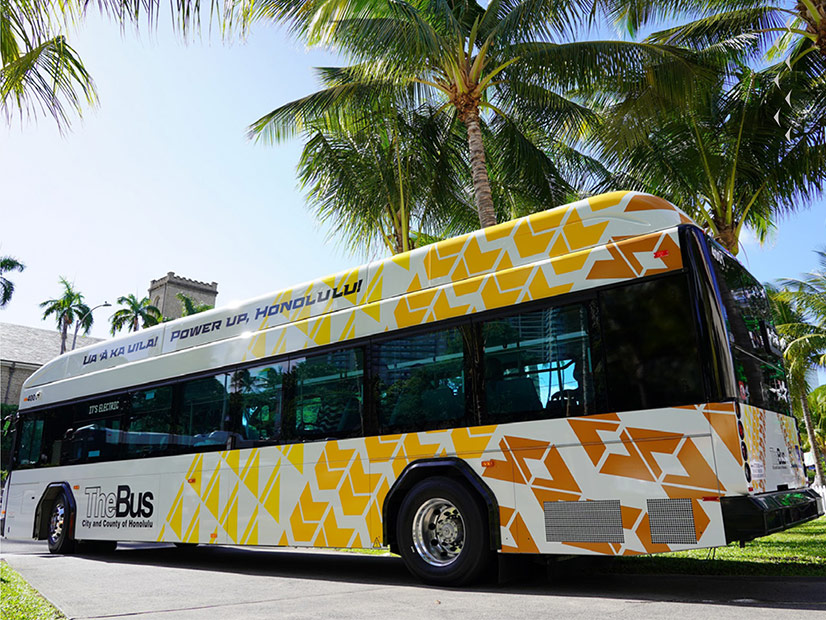The Honolulu City Council on Wednesday voted to adopt a new climate action plan (CAP) that details nine strategies for curbing greenhouse gas emissions from the city’s electricity, waste and ground transportation while boosting its renewable energy infrastructure through 2025.
Called One Climate, One Oahu, the CAP aims to reduce the city’s GHGs by 16% compared with an estimated baseline without the plan, amounting to a 45% total reduction in 2025 relative to 2015.
Of the nine strategies, four are directed at ground transportation, which accounts for about 19% the state’s GHGs. Air transportation makes up 23%.
Strategy 1 encourages mixed land use to reduce vehicle miles traveled (VMT) by decreasing the distance between destinations. The report says that “land use change is perhaps the most impactful tool within the City’s jurisdiction to reduce GHG emissions,” in part because bringing everything closer together “increases access to and makes more feasible alternative modes of transportation like biking, walking and public transit, especially when accompanied by safe pedestrian and biking infrastructure.”
Strategy 2 dovetails with that concept by recommending the city implement multimodal transportation. The recommendations ask for development of a Transportation Demand Management program that will explore telework policies, subsidize multimodal transit and eliminate free long-term parking. Strategy 2 would also implement the 88-mile Oahu Bike Plan, launch an integrated transit fare card with fare-capped rates, identify business solutions to reduce VMT and launch a trip planning app.
Strategy 3 would disincentivize parking to encourage multimodal transit because “low parking prices and high parking availability are more likely to induce private automobile ownership and travel.” It recommends implementing dynamic parking rates, repurposing underutilized parking areas for multimodal infrastructure, and eliminating off-street parking requirements to allow developers to build homes without parking spaces.
Strategy 4 would electrify the city’s heavy-duty vehicle fleet. Noting that electric buses carry an upfront premium of $400,000 compared with diesel models (based on a recent solicitation), the plan recommends developing a longer-term strategy to purchase buses over time, reaching 100% electric by 2035. It also recommends expanding electric vehicle infrastructure to handle this change and providing car-sharing companies with fuel efficient vehicles and encouraging them to offer point-to-point travel to bridge the last leg of a trip if a customer rides the bus.

Strategies 5 through 7 look to increase energy efficiency in buildings. The CAP recommends updating building energy codes and performance standards, retrofitting older buildings to get them up to date, utilizing rooftops for renewable energy generation, streamlining the permitting process for solar PV, and launching the Solarize Oahu pilot, which would incentivize people in lower-income areas to purchase solar by offering bulk community pricing.
Strategies 8 and 9 recommend reducing waste by continuing to phase out single-use plastics, creating a volume-based pricing scheme for trash pickup, establishing a recycle and reuse program for buildings that are deconstructed, expanding edible food recovery, implementing methane collection systems at landfills and wastewater treatment facilities, exploring shipping materials out of state for recycling, and exploring composting possibilities with private parties.
The electricity, waste and ground transportation sectors account for 57% of Oahu’s GHG emissions, and the island’s emissions are about twice the global average. The CAP says that while the reductions from the strategies will help, they are “both aggressive yet insufficient.” It will “require the city, state and federal governments going many steps further than this CAP” for Oahu to reach carbon neutrality by 2045.
The CAP points out that a large portion of GHGs on Oahu come from petroleum refineries and air travel, which are under the larger purview of the state and federal government, respectively.
The plan was published by Honolulu’s Office of Climate Change, Sustainability and Resiliency in partnership with the University of Hawaii’s Economic Research Organization and Institute for Sustainability and Research.



